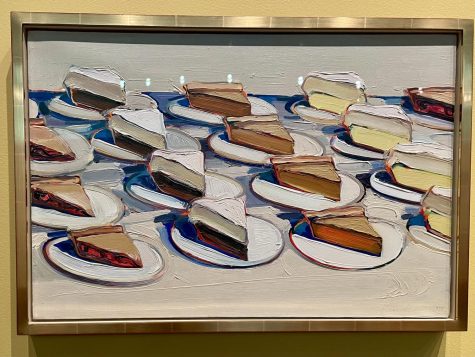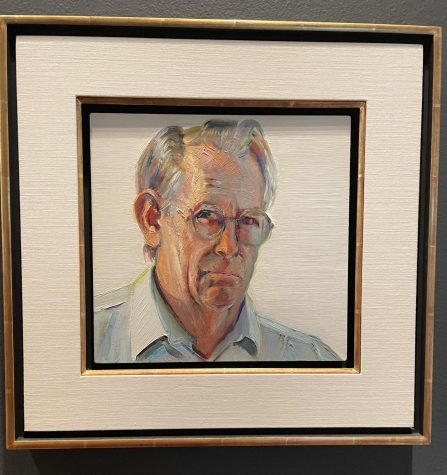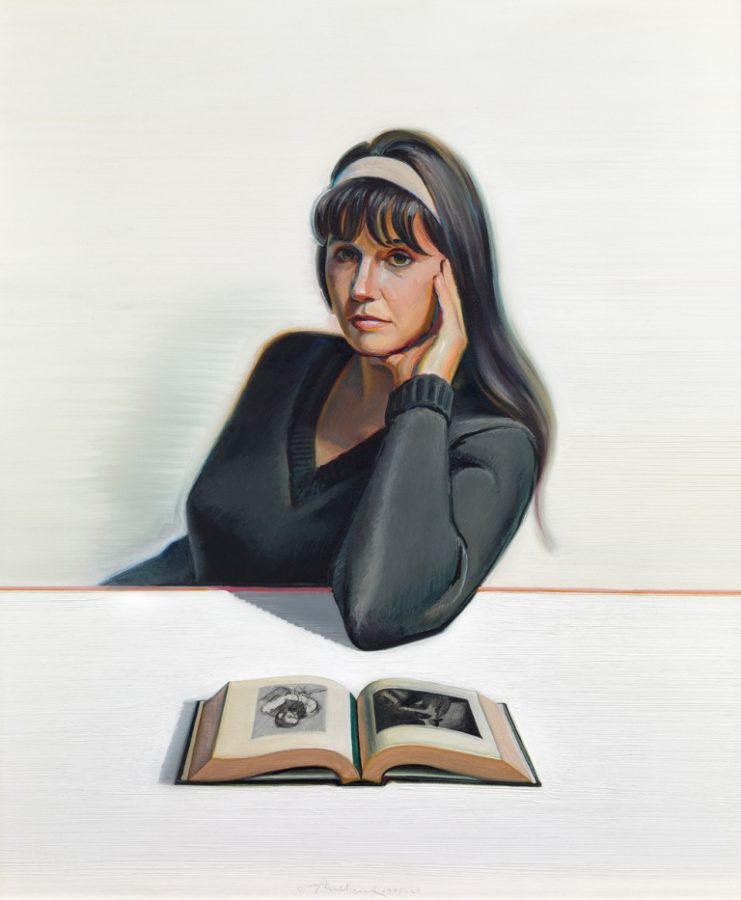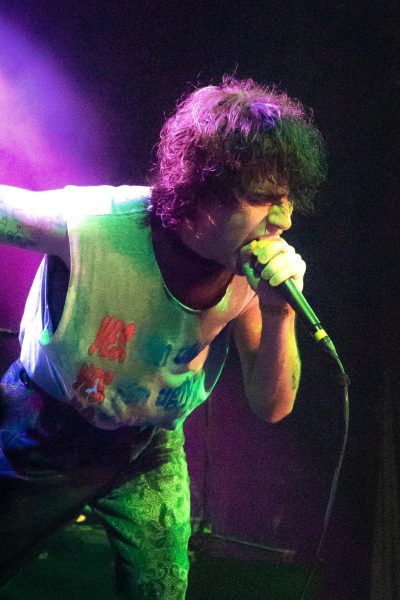American pop art: Wayne Thiebaud
“Wayne Thiebaud: 100 Paintings, Prints and Drawings” featured at the McNay
Wayne Thiebaud. “Betty Jean Thiebaud and Book,” 1965-69.
November 16, 2021
The “Wayne Thiebaud” art exhibit is a new exhibition that opened up Oct. 28 and will be available to visit until Jan. 16, 2022. The exhibition will be held at the McNay Art Museum here in San Antonio. This exhibition holds 100 works to celebrate Thiebaud’s 100th birthday. This is an incredible event to visit with numerous art works to view which span the course of the artist’s life.
Thiebaud was born November 15, 1920 in Mesa, Arizona. He spent most of his childhood in Long Beach, California and he moved to the Sacramento region of California with the United States Air Forces in 1942. After leaving the military, he worked in commercial art in Los Angeles before pursuing a career as a studio artist. Thiebaud, who is associated with the Pop Art Movement,is best known for his paintings of desserts and food. In addition to painting realistic depictions of food, he also depicted people, city scapes and everyday objects in ways that are both tantalizing and memorable.
It was his food subjects that initially made Thiebaud famous — rightfully so. His food and dessert paintings are incredibly realistic. He uses oil on canvas and thick strokes, utilizing the paint to give texture and mimic the consistency of the food. One of his paintings, “Pies, Pies, Pies” depicts various pies, set in rows as if being displayed in a bakery or cafeteria. The thick paint strokes imitate the texture of the food: such as whip cream, chocolate and fruit. Thiebaud accomplishes this with rich, bright colors, making your mouth water just by looking at these images. That is part of Thiebaud’s mastery; he uses shadow, texture and color to make food truly beautiful and captivating to the eye. Thiebaud’s paintings of food and desserts are numerous. Although they are simply images — cereal, soup, cheese, ice cream cones, sardines, etc — the vibrancy and artistry of these pictures are incredible.

In addition to food, Thiebaud also paints people. His portraits of human figures are some of his most famous pieces. There are many quotes lining the walls of the exhibit, lending insight into Thiebaud’s thought process. “Most people in figure paintings have always done something…What I’m interested in, really, is the figure that is about to do something, or has done something, or is doing nothing,” Thiebaud said.
One of Thiebaud’s most masterful portraits is that of his wife, “Betty Jean Thiebaud and Book” (1965-69). In this painting, Betty is set against a white backdrop and table with a book lying open in front of her. The side of her face is resting in her hand and her eyes are staring into the distance. She is wearing a black sweater and a white headband that stands out against her dark brown hair. The colors in this painting are mesmerizing; Betty is a pop of color against the white background,her face is contemplative and thoughtful. The beauty of her form and the colors and shadows make this painting magnetic, pulling you forward.
Another of Thiebald’s portraits is a self-portrait called “4 Hour Study” (1989). As the title suggests, he completed this in only four hours. Thiebaud created many self-portraits over the years, documenting how he changed over time. “Sterling Holloway” (1965), in particular, is a standout. Sterling Holloway was a famous voice actor for Disney, his most notable role the voice of Winnie the Pooh.


As you move through the exhibition, you journey through the different subjects Thiebaud focused on throughout his art career. From food, to clowns, glasses, letters, portraits, landscapes and cityscapes — his range was endless.
“I make sketches while visiting different countries, walking in museums, viewing athletic events, riding in the car, listening to concerts, watching television and attending lectures,” Thiebaud said.
This dedication to art helped to fuel Thiebaud’s style. He draws and paints everything. Everyday objects become beautiful and fascinating as he morphs them into something new.
At the very back of the exhibition are Thiebaud’s cityscapes and delta scenes. These landscapes are colorful and whimsical, with lots of detail and abstract lines and brushstrokes. In 1966, Thiebaud began his cityscapes, focusing on areas in Sacramento Valley, the nearby foothills and Sierra Nevada. He often eliminated the horizon line to give his landscapes a disorienting quality.
“I’m not just interested in the pictorial aspects of the landscape, see a pretty place, and try to paint it — but in some way to manage it, manipulate it, or see what I can turn it into,” Thiebaud said.
Thiebaud is a master of real-life depictions, with a pop art influence. From his cityscapes to his paintings of food, he uses color, light, and texture to create pictures that capture the eye and are palatable to the majority of audiences. These are just a fraction of all the incredible works available to view at the Thiebaud art exhibit. Since it is a special exhibition, there is a $10 admission fee — even for students — but the price is worth it. There is much to view and the visual experience of seeing these works up-close is much more impactful than seeing them online or elsewhere. For those who may have never heard of Wayne Thiebaud, this exhibit is a great way to get acquainted with this artist and his life-time’s worth of art.












Valeria • Nov 24, 2021 at 7:03 am
I love Mr. Thieband’s artwork. It’s exquisite, and skillfully executed, whether he’s painting realistically or using food as his subject matter. Every artists can learn from this huge body of fine artwork on display until 2022.